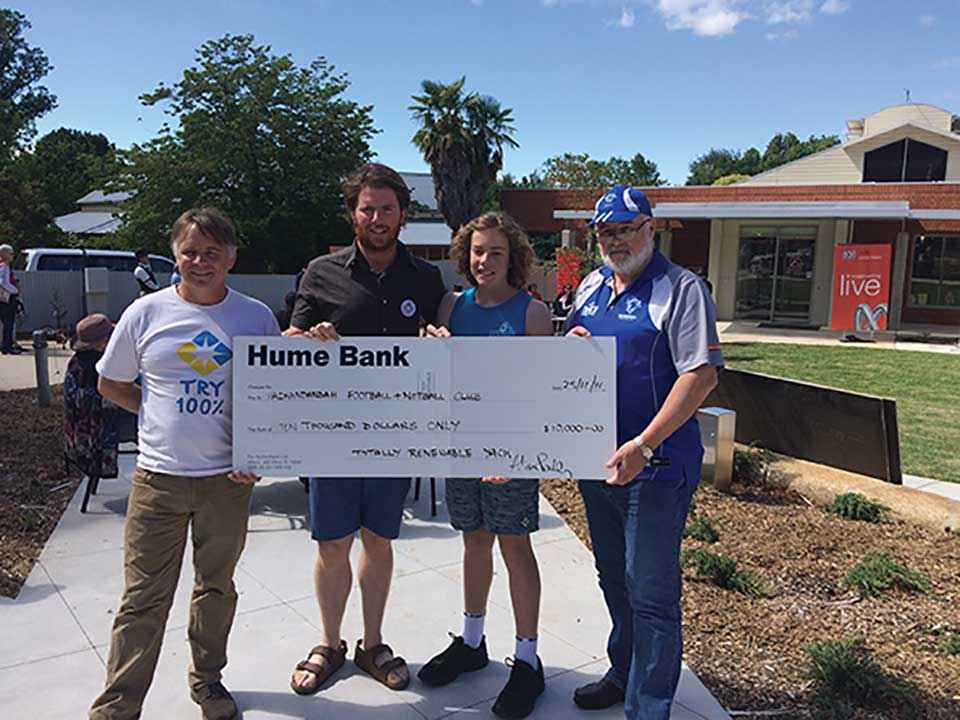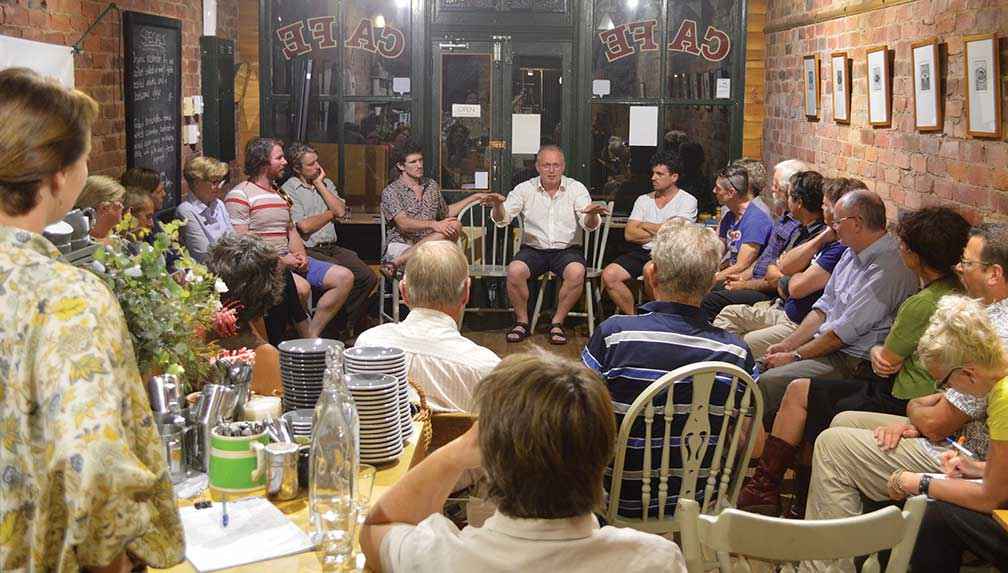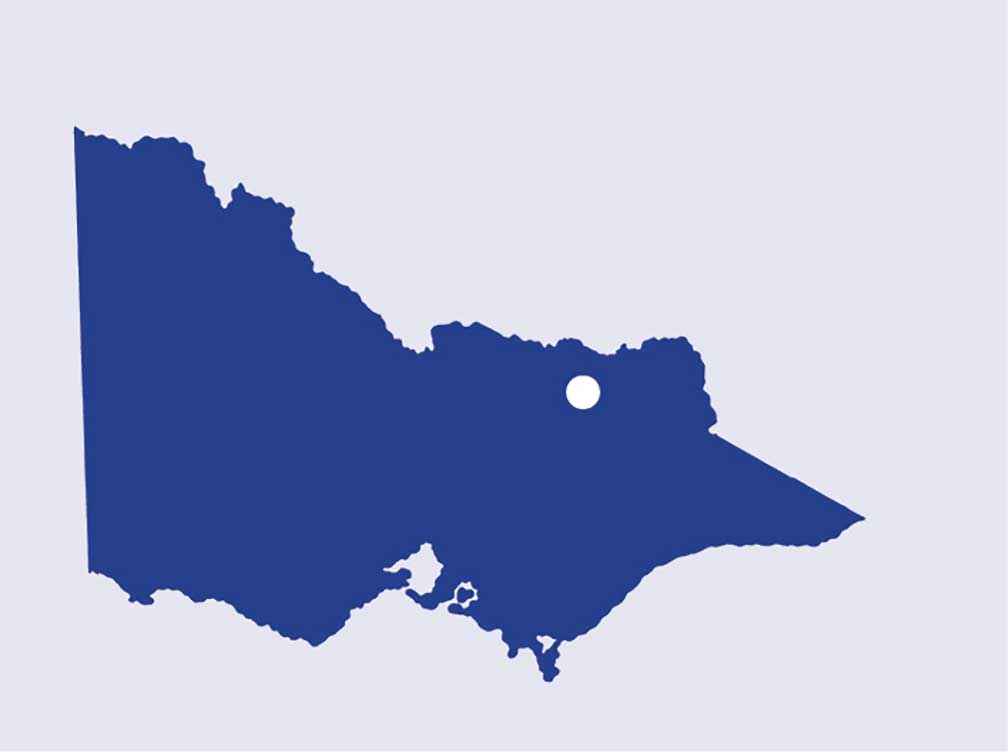Victorian Landcare Magazine - Winter 2017, Issue 69

In 2014 Totally Renewable Yackandandah (TRY) formed with the objective of moving to a 100 per cent renewable energy target by the year 2022.
TRY functions as a community advocacy group, encouraging and assisting businesses, individuals, other community organisations and key energy stakeholders in and around Yackandandah to implement energy efficiency measures and install solar panels.
Over the last three years the town of Yackandandah has made some serious progress towards its target. Approximately 35 per cent of the households and businesses in Yackandandah now have solar panels, well over the state average of 14 per cent.
Besides its renewable energy advocacy work, TRY has been assisting businesses and community groups to install large solar arrays through its Perpetual Energy Fund (PEF). The PEF offers organisations an interest free loan to remove the upfront cost of the installation of solar panels. Organisations can pay off the loan through savings on their energy bills.
Last year TRY announced a $10,000 PEF loan to the Yackandandah Kangaroos Football Club. It is being used to help the club to fund ways to reduce energy costs at the Yackandandah Sporting Complex.
The savings the club will make on its energy bills from lighting upgrades and other energy-saving improvements will be paid back into the fund and the process will be repeated for other community organisations.
The PEF was also used to advance $5000 to the managers of the local hospital, Yackandandah Health, for the same purpose, enabling it to commission a 90-kilowatt solar-panel energy-generation system that is expected to save the service up to $1 million over the next 25 years.
The investment will also lead to a reduction in greenhouse gas emissions of 115 tonnes per year – the equivalent of taking 23 cars permanently off the road.

Above: Soren Hermansen (centre in the white shirt) leading a workshop at Yackandandah earlier this year. Soren’s Danish Island, Samso, transitioned to 100 per cent renewable energy in 2007.
Earlier this year TRY announced it was working towards developing one of Australia’s first commercially operating mini grids. The mini grid is an energy system in which a group of households is equipped with an individual energy generation (solar panels) and storage capability (battery). As a mini grid this group can function as a unified energy community through the use of technology such as wireless communications, cloud-based software platforms and home energy management systems.
As a part of this mini grid plan, TRY will launch a community energy retailer able to facilitate trade between households on the mini grid, under a type of shared economy model, and to sell locally produced renewable energy to those houses and businesses not connected to the mini grid.
We know that the Yackandandah community has the will and the energy to reach its 100 per cent renewable energy target. With the mini grid plan and technology we are confident that we now have the means as well.
Ben McGowan is a volunteer at TRY.

Above: Location of Totally Renewable Yackandandah